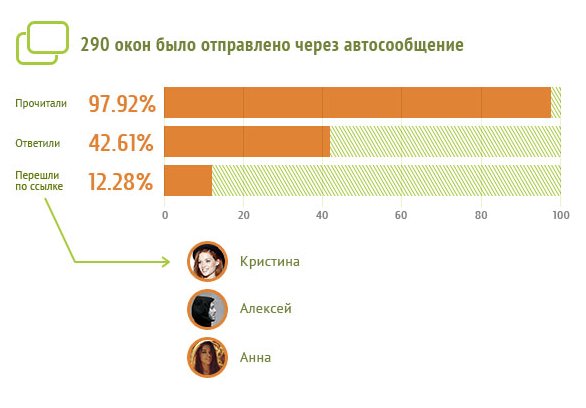The user did not leave an email? 9 examples of how to keep it and bring it to a purchase
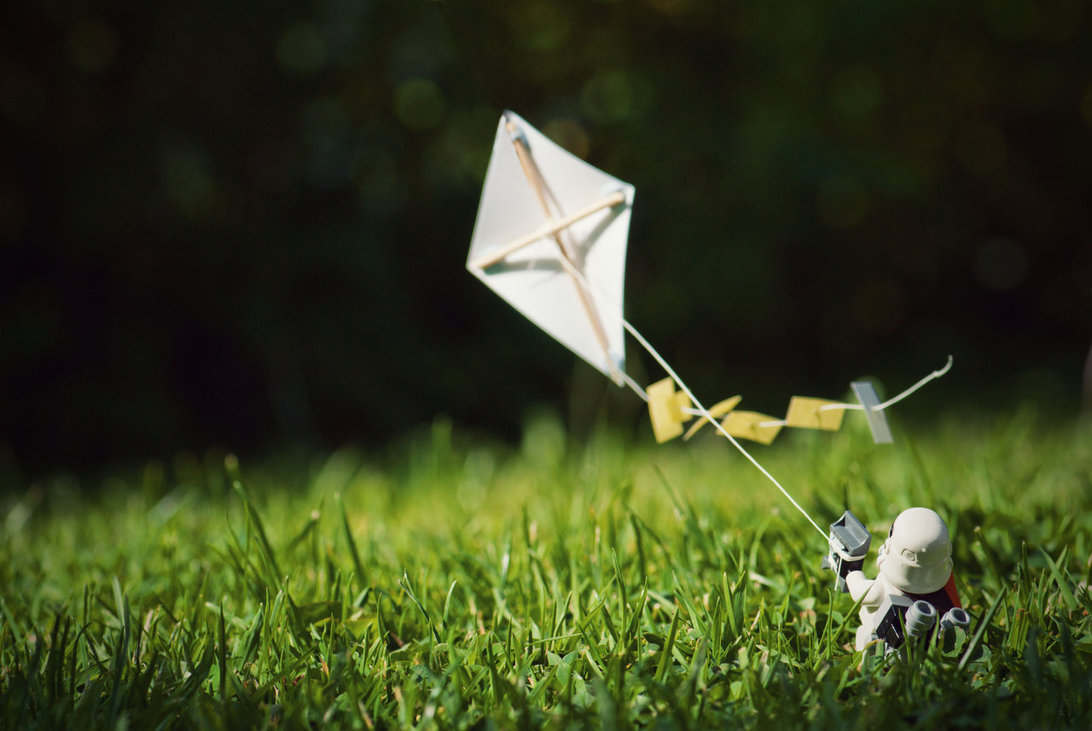
Have you ever wondered how many of your users “fall off” at each stage of engagement? These numbers will not please you, you can see for yourself ...
The SeeWhy study says that 99% of users do not buy anything when they first visit the online store, but 75% of them are ready to return later. Later - it sounds good, but that does not mean that they will come back to you.
To return the departed or to attract new ones in return is very expensive and not easy. Many have learned to return today using trigger email marketing . Competition for the return of users every day is becoming tougher. So, releasing the user from your site, you lose a special advantage and again begin to compete for the client.
To make competition for return easier, your task number 1 is to engage the user in the next stage of the funnel before leaving the site. Agree, if you have to return 30 people instead of 50, then this is a serious advantage.
As in the article about trigger email, we will analyze our examples by stages of engagement.

- Attraction - we skip this stage, because Now only the stages when the user is already on our site are relevant to us.
- Lead generation - obtaining user contact information, involving users in the process of interaction with the company, heating leads, etc.
- Sale - at this moment we already know that the user is interested in our service or product. Our task is to make him buy.
- Re-sale - after the first purchase, many will be ready to buy from you again, they just need to help a bit, remind themselves, give additional incentives to return or offer a new product.
Trigger pop-up (pop-up window) is ideal for all stages. We recently wrote about its advantages over trigger email marketing. Trigger, if you forget, it means happening under certain conditions and actions of the user. The main advantage of the pop-up window is that we don’t need to know the user's email. More often than not, at the stages of lead generation and sale, you and I do not know the addresses of users, which is why we cannot influence them through the mail. A popup solves this problem.
Just note that we are against an infinite number of windows that randomly appear on the site. It is necessary to more finely approach the moment the windows appear and their contents. We’ll talk about this.
We divide the article into 2 parts:
- Examples of trigger pop-up windows at the stages of involvement;
- Their creation and customization in the Carrot quest .
I. Examples of trigger pop-up windows
Lead generation
It is much easier to work with “hot” leads, and selling them is more pleasant. Generate leads and prepare them for your product.
1. Involve and help
Often, before buying, users thoroughly study the product information available on the Internet.
Imagine you work in a travel agency. Visitors visit your site daily, but most of them leave. So that they do not run over to your competitors, you must engage them in communication.
For example, a user in search of booking tours looked for a ticket to Italy. In this case, after a few seconds, you can show him a pop-up of similar content: The most important thing here is that we “guessed” the user's motives and did not ask him abstract questions.
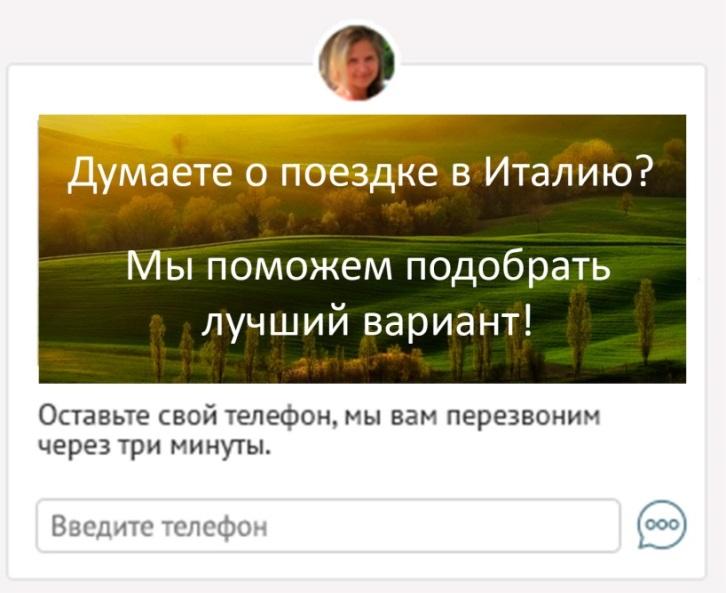
Acting this way, we can collect contact details of potential customers and push them to purchase from us.
2. Bonus
In order to collect contact information about users and in the future “warm up leads”, you can offer them a bonus even at the stage of the first visit to the site. The bonus can be different: free useful content, discount, “bonus amount”, free delivery, etc. In the example, this is an offer to subscribe to the newsletter and receive a bonus of 500 rubles. It is clear that in the future due to this, the company will convert the lead into a client, but with the help of email marketing. Use pop-ups for lead generation, not just for sale, as many are used to. You can come up with a lot of great ideas for your industry and consciously increase conversion.
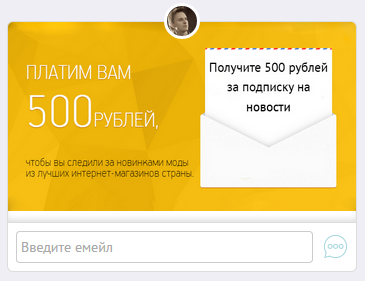
Sale
Most potential customers end up not making a purchase. They choose, think, and at the very last moment can still leave. This is indicated by abandoned baskets (about 70% of customers leave without completing an order). You need to convince the user of the correct purchase decision.
1. Social evidence
Social evidence is one of the most important factors affecting purchasing decisions.
Studies show that 70% of users review reviews before buying. They trust reviews 12 times more than your product description. Therefore, reviews can not be hidden.
For example, if you have an online bookstore. Tell the user how many people have already purchased the book that he is currently viewing. Show him reviews about this book, and after he buys, invite him to leave a review. 2. Additional argument Imagine that the user visited the page with one product several times. When you visit again, you can configure a pop-up window. It will list additional product benefits that are not listed in the main description. This will help convince some of the doubting users. You can display various additional benefits of the product, depending on what actions the user has previously performed. Our service


allows you to track these user actions (went to the page, clicked on the button, came again, who he is, etc.) and divide them into segments. Thanks to this, similar pop-ups can be configured more accurately and personalized.
3. Abandoned basket
How to return a user who has thrown a basket - one of the most common cases on the Internet. Most of them lead to one solution - return via email marketing (by the way, we also talked about this recently ). But no one talks about how to work with an abandoned basket without an email address, because few leave it.
Carrot questremembers visitors. We do not need user authorization, so that we recognize him on a second visit. Knowing the user and his actions, we can remind about the abandoned basket when he logs in again.
You can configure a universal pop-up that will be shown to all users on a second visit if they abandoned the baskets. By the way, you can also show pop-up with specific products that are left in the basket. At this stage, examples from the previous part (lead generation) will do. 4. Repeated Visitors Visitors constantly review products and services on sites. They go and come back, go and come back. It is likely that they are at the stage of pondering a purchase. Help them!

Offer a small bonus to the visitor if he visited more than 2 times on the product page. This can be a discount, free delivery, a bonus for the next purchase, a draw, etc.
5. Bonus for the purchase of an abandoned basket
Suppose you have already set up a trigger email newsletter about an abandoned order and in this letter give users a bonus for the purchase (for example, in the form of a promotional code). Help the user when he will go to the site from this letter.
Tell him again that he has a promotional code that he can use.
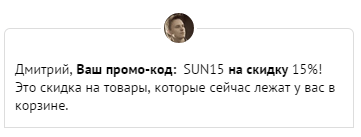
This will help to keep the user who has crossed over from the letter and help him using the code (not everyone remembers or copies the code directly in the letter). And some users throw a basket, simply because they could not buy. For example, they have technical problems, problems with payment, or something else. For such users, your chat message will help to contact the manager and share their problems. And finish the purchase.
Repeated sale (retention)
Did the customer buy from you? Excellent! But this is only half the battle. If you have a really great product or service, the customer will be ready for a second purchase. Help him with this. It is much more effective and cheaper than attracting a new one.
1. Additional Product Reviews
Imagine your customer bought a bike a week ago. Probably, he has already managed to “run around” it and with a high probability may be interested in related products (for example, a bicycle helmet).
The next time you visit the site (after the purchase), show him the pop-up leading to the article review of bicycle helmets. In the article itself, you tell him everything in detail and show the available helmet models in your store. Will he buy? Probably.
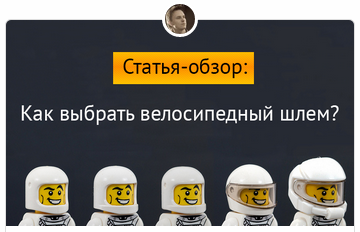
Content - today it is a mandatory component of any online business. Articles, reviews, videos, interviews, etc. Set goals and get started ...
2. Feedback
Find out if the customer liked your product. Ask for feedback and get involved in your next purchase. Good attitude and communication with the client do their job.
In addition, these reviews will be useful as social evidence, which we analyzed at the beginning of the article.
In order not to be limited to one review from a customer, offer him a discount on his next purchase. The less your pop-ups will impose a purchase on a customer, the better. Create interesting offers. For example, a pop-up with a review article on bicycle helmets, which was described above.

II. How to create and configure pop-ups in the Carrot Quest service.
All the examples described were created in the Carrot quest service and have several advantages. The service defines a lot of user actions, writes them to an individual card, which makes it possible to fine-tune such windows. After all, if we know everything about the user, we can easily create effective pop-ups.
Configuring pop-ups is quite simple. In total, it consists of 4 stages. A type. In the auto-messages section, select the type of message - online chat, pop-up window or email. Enter any name or one that matches your campaign. Lecture hall

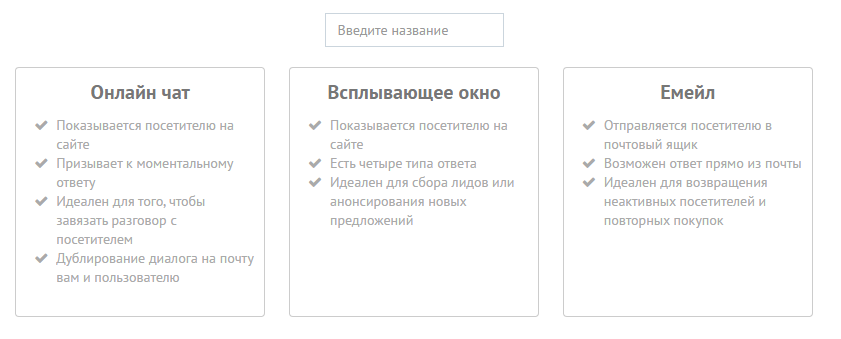
Here you select the events after which the message will be displayed. All events that you configure in the service will be available here. For example, returning to the same page.
Set the time after which the window will appear. Enter the necessary filters. For example, show the window only to visitors who came from a particular channel.
You can configure message resubmission and automatic message uptime. Content
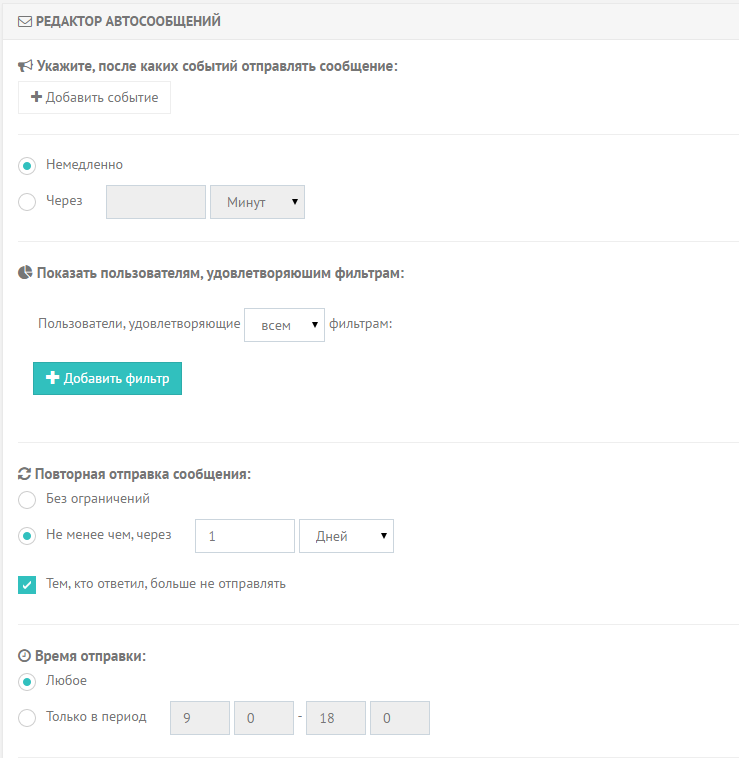
In the next step, you choose the size of the popup and the type of response. The type of response is how the form will look below the window itself, so that the user writes in it. You can completely remove the form of the text (no response), you can leave the form there by email, phone or just any answer. In the examples, different options were presented.
The location of the show also depends on the size. A large pop-up pops up in the center of the screen, and a small one pops up on the right or left. Next, enter the contents of the window itself. It can be a text or a banner. Set up small nuances and you're done. Check how pop-up will look and start auto-messaging.
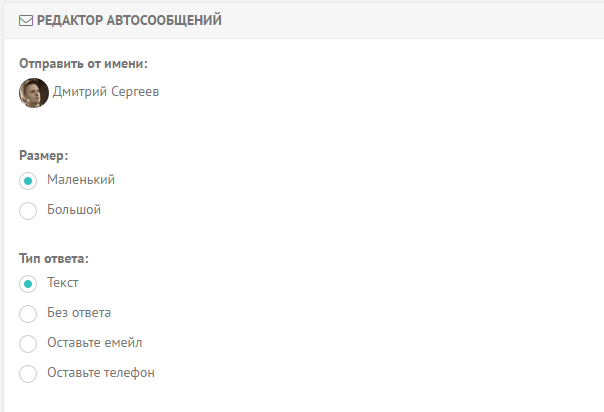

The service will provide full pop-up analytics. Interestingly, you can also know exactly who read, followed the link or responded to pop-up. And see the further chain of actions of this user. Track, analyze, adjust and increase conversion at each stage of engagement. Come up with your own solutions, because marketing is primarily the generation of new ideas. Your team from Carrot Quest .
